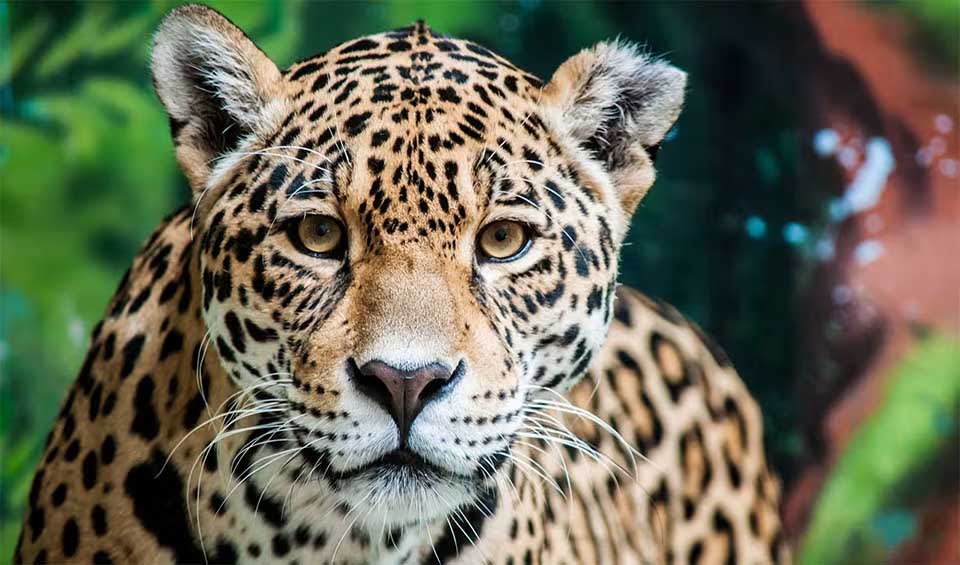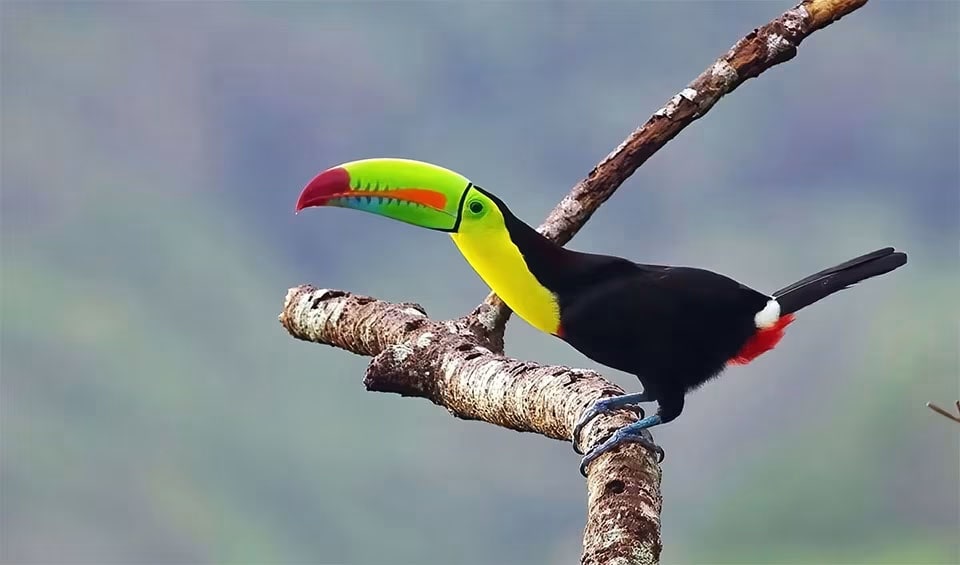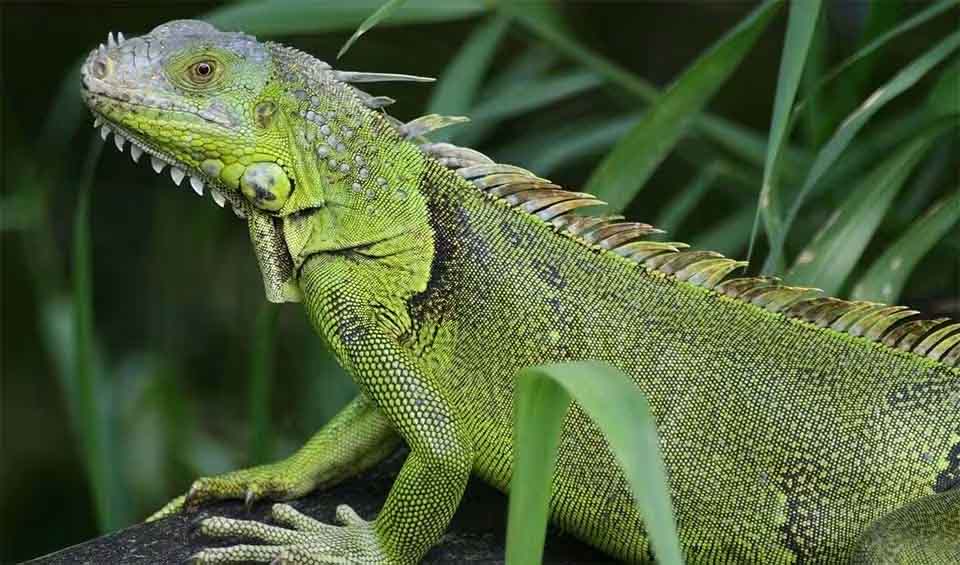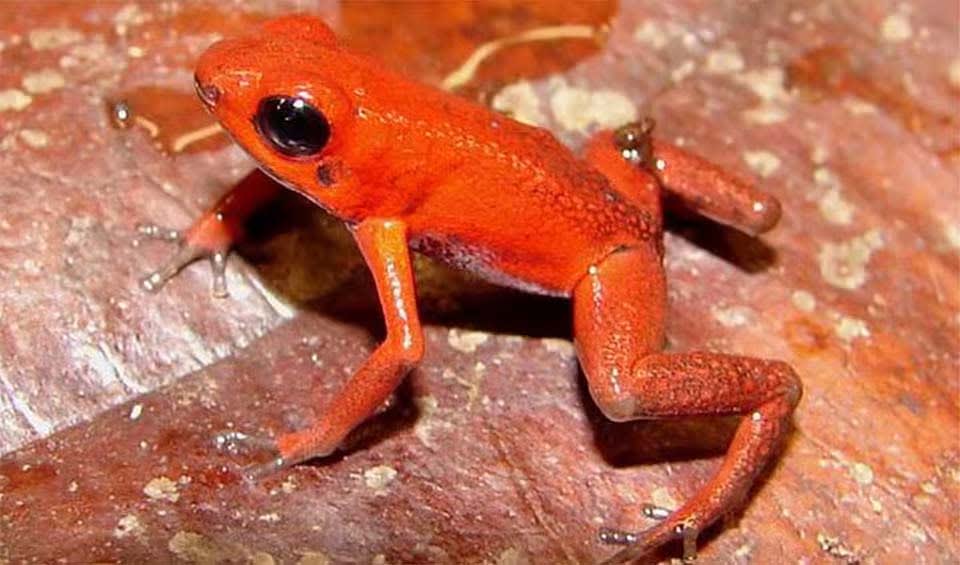Colombia is known as one of the world’s megadiverse countries, home to nearly 10% of all species on Earth. It globally leads in bird and orchid diversity, ranks second in plants, amphibians, freshwater fish, and butterflies, and is third in reptiles and palms. Notably 95 species of birds, 421 amphibians, 67 mammals,150 reptiles, 8,800 plants, and 1,543 orchids are endemic, many found in the Amazon and Chocó regions, global biodiversity hotspots. It spans five major biogeographic regions: the Andes, Caribbean, Pacific coast, Amazon, and Orinoco plains, hosting 19% of the world’s bird species.
Unfortunately, over 1,200 species are threatened in Colombia, including 638 animals and 268 plants, with 173 critically endangered, 390 endangered, and 640 vulnerable. Even the guardian spirit of the forest, the Harpy Eagle, faces threats. In the past fifty years, Colombia has lost three endemic species: the monk seal, Colombian Grebe, and grease-fish.
Colombia’s 314 ecosystems provide vital services, but challenges like habitat loss from farming affect forests. Efforts by Colombia’s Ministry of Environment and National Parks to protect its natural diversity are crucial for sustainable development, water resources, and climate stability.
Four pillars elaborated:
Colombia has established the National System of Protected Areas (SINAP), comprising 1,359 protected areas covering a total of 314,032.55 km² (121,348 mi²). This area represents about 15.17% of the national territory. Terrestrial Protected areas (PAs) encompass 16.61% of the land, while marine protected areas (MPAs) cover 13.40% of its marine territory. Land Management
Land Management
There are 26 ecoregions, each with significant biogeographic, demographic, economic, and socio-cultural differences. Between 2010 to 2018, it achieved an increase in ‘ecological representativeness’ from 73% to 83%, protecting 199 out of 240 ecosystem units.
Colombia identifies 152 Key Biodiversity Areas (KBAs) with varying levels of protection under Protected Areas (PAs). Specifically, 41 KBAs are fully protected, while 66 have partial coverage, and 44 have minimal to no coverage by PAs.
In addition to terrestrial and inland waters, these conservation efforts extend into its Exclusive Economic Zone (EEZ), where 3 Ecologically or Biologically Significant Marine Areas (EBSAs) partially overlap with national waters.
Colombia’s biodiversity faces serious threats from human activities, particularly deforestation, which leads to extensive habitat loss. Rapid urbanization, overexploitation, overfishing, and overharvesting all contribute to habitat degradation. Industries like oil, minerals, and metals also harm ecosystems. Pollution from pesticides, air, and water compounds these issues, contributing to significant health risks, with up to 8% of human deaths linked to pollution. Threats to Biodiversity
Threats to Biodiversity
Climate change accelerates these issues. As temperatures rise and are expected to increase, threatening wildlife, vegetation, agriculture, and coastal cities. Colombia has signed the Paris Agreement, but it still depends on coal and also, ongoing deforestation raises questions about its ability to reduce emissions.
Post-peace agreement shifts, including increased agricultural expansion, mining, and infrastructure development, pose additional threats. Social inequality, armed conflict, economic re-primarization, the illegal drug trade, weak land policies, and coordination challenges further hinder biodiversity protection efforts.
Colombia uses a combination of approaches involving both public and private sectors at various levels (national, regional, local, and international) to manage its biodiversity. About 68.1% of the protected areas are privately managed, highlighting the significant role of non governmental groups in conservation. Capacity and Governance
Capacity and Governance
Key laws and decrees include Decree No. 44 of 2024 focusing on mining areas with temporary reserves, Decree-Law 2811 of 1974 for sustainable resource management, Law 99 of 1993 organizing the National Environmental System (SINA) for biodiversity, and Decree 2372 of 2010 regulating protected areas. However, some policy incentives related to rural development and zoning planning, such as incentives for rice storage, special credit lines, agricultural development credits, and forest certificates, may have negative impacts on biodiversity.
From 2009-2019, Colombia invested around USD 536.2 million annually in biodiversity, about 0.12% of GDP, 0.5% of the national budget, and 25% of the country’s environmental budget.
In 2012, Colombia’s Ministry of the Environment and Sustainable Development introduced the National Policy for the Integral Management of Biodiversity and its Ecosystem Services (PNGIBSE). This framework, based on six key pillars: biodiversity conservation, governance, economic development, knowledge management, risk management, and shared responsibility, is currently being implemented in Colombia. Future Trends
Future Trends
Before the Peace Agreement, FARC and other armed groups minimized human impact on forests by restricting activities. But, since the FARC withdrew from forests, there has been a noticeable increase in agricultural expansion and various lawful and unlawful activities.
Colombia has launched the Fund for Life and Biodiversity (in 2023), with the goal of nearly $1 billion by 2026. This initiative will help environmental projects by efficiently distributing resources, which is crucial for conserving biodiversity as social and political conditions change over time.
Biodiversity
The Amazon rainforest, covering a significant portion of southeastern Colombia, is a biodiversity treasure trove. This region is home to an extraordinary variety of wildlife, including jaguars, pink river dolphins, and giant otters, as well as numerous bird species like macaws and harpy eagles. The forests are rich in plant diversity, with countless species of trees, orchids, and medicinal plants. The Chiribiquete National Park, a UNESCO World Heritage site, is known for its high biodiversity and ancient rock art.The Andes mountains, which run through the center of Colombia, create diverse habitats at varying altitudes. Unique species such as the Andean condor, spectacled bear, and various species of hummingbirds thrive in these regions. The páramo, a high-altitude tundra ecosystem found only in the northern Andes, supports unique plant species like frailejones and is crucial for water regulation.
Colombia’s Pacific and Caribbean coastlines are also rich in biodiversity. The Pacific coast, with its rainforests and mangrove swamps, is home to species such as the humpback whale, which migrates to the region to breed, and the endangered sea turtles that nest on its beaches. The Caribbean coast, with its coral reefs, supports a variety of marine life, including colorful fish, sea turtles, and dolphins. The country’s extensive river systems, including the Amazon, Orinoco, and Magdalena rivers, are vital for aquatic biodiversity. These rivers support a variety of fish, amphibians, and reptiles, and their floodplains are important habitats for birds and other wildlife.
In the table below are the number of known species in several main groups, how many of these species are Threatened with extinction, and how many of them are Endemic (unique to Colombia only):
| Species (World rank) |
Threatened | % Threatened | Endemic | % Endemic | |
|---|---|---|---|---|---|
| Mammals | 531 (#7) | 58 | 10.9% | 67 | 12.6% |
| Birds | 1,871 (#1) | 86 | 4.6% | 95 | 5.1% |
| Reptiles | 665 (#7) | 35 | 5.3% | 150 | 22.6% |
| Amphibians | 833 (#2) | 300 | 36.0% | 421 | 50.5% |
| Fishes | 2,144 (#15) | 159 | 7.4% | 84 | 3.9% |
| Plants | 40,000 (#4) | 268 | 0.7% | 8,803 | 22.0% |
mammals
Jaguar
This solitary cat is America’s largest feline and the world’s third, after the tiger and the lion
Spectacled bear
The last surviving bear species of South America, native to the Andes mountains
Giant anteater
These specialist predators of termites and ants are not immune to ant bites
birds
Scarlet macaw
One of the most colorful birds — effortlessly falls in love
Keel-billed toucan
The national bird of Belize, this majestic bird will make your head turn
King vulture
The most colorful vulture, with the orange cruncle
reptiles
Boa constrictor
A small genus of Large snakes, strangling their prey endemic to the Americas
American crocodile
These creatures often ingest stones, aiding food digestion and buoyancy regulation in the water
Green iguana
From the US down to Brazil, this trans-American lizard is the most common iguana
amphibians
Golden poison frog
Despite being one of the most toxic animals on earth, the golden poison frogs can’t save themselves from toxic humans
Mission golden-eyed tree frog
Golden-eyed frog, Panda treefrog, Blue-milk frog -so many cute names for such a poisonous animal!
Andean poison frog
Those vibrant hues conceal potent venom in this nature’s delicate masterpiece
National Animals
Andean condor
The largest and heaviest raptor in the world

















